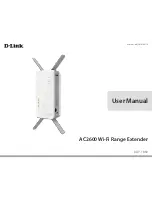
2
As a contact sensor
Depending on the selected IO configuration, up to four external
contacts are possible. As a contact sensor, this device allows
wireless monitoring of garage doors, gates, windows, mailboxes,
doorbells, and pool or spa covers (along with other contact
sensor monitoring applications you integrate or devise). These
functions appear in a Control4 system as contact sensor inputs,
which can trigger home automation events.
The internal contact is a magnetic reed switch. To use this
internal contact, the Z2IO should be mounted so that the
indention (along the same edge as the identify button) comes
in close proximity to a mounted magnet (not included) in a fully
closed state (door is closed). When the door opens, the magnetic
connection is lost, and that state change is pushed to the system.
Contact and relay wiring options
There are five wiring options for contacts and relays. After they
are physically wired (as explained below), the correct option
must be manually selected on the
Properties
tab using the
IO
Properties
drop-down box.
Pins
PWR
Cm
T
C4
C3
Cm
C2
C1
Options
1
+
Cm
T
R2 (SPST)
R2 (SPST)
Cm
R1 (SPST)
R1 (SPST)
2
C4
C3
C2
C1
3
C2
C1
R1 (SPST)
R1 (SPST)
4
R2 (SPDT)
R2 (SPDT)
R1 (SPDT)
R1 (SPDT)
5
R2 (DPST)
R2 (DPST)
R1 (DPST)
R1 (DPST)
R# = Relay, C# = Contact, Cm = Common ground (-), T = Thermistor,
SPST = Single pole single throw, SPDT = Single pole double throw,
DPST = Double pole single throw
Option 1:
Two Relays using R1, R2—Two independent, single
pole single throw (SPST) relays. Each relay controls a single
circuit.
• Relay 1 is wired to pins C1 and pin C2.
• Relay 2 is wired to pins C3 and pin C4
Option 2:
Four Contacts using C1, C2, C3, C4—Four
independently sensed circuits.
• Contact 1 is wired to pin C1 and pin Cm (Common).
• Contact 2 is wired to pin C2 and pin Cm (Common).
• Contact 3 is wired to pin C3 and pin Cm (Common).
• Contact 4 is wired to pin C4 and pin Cm (Common)
Option 3:
One Relay (SPST) and Two Contacts using R1 and
C1, C2.
• Relay 1 is wired to pin C1 and pin C2.
• Contact 1 is wired to pin C3 and pin Cm (Common).
• Contact 2 is wired to pin C4 and pin Cm (Common).
Option 4:
One Relay using R1 and R2 (SPDT)—The two relays
operate together to simulate a single SPDT (single pole
double throw) relay. However, unlike a true SPDT relay, both
relays will open during a power failure.
• Relay 1 is wired to pin C1 and pin C2.
• Relay 2 is wired to pin C3 and pin C4.
Option 5:
One Relay using R1 and R2 (DPST)—The two relays
operate together to simulate a single DPST (double pole
single throw configuration) relay. However, unlike a true
DPST relay, both relays will open during a power failure.
• Relay 1 is wired to pin C1 and pin C2.
• Relay 2 is wired to pin C3 and pin C4.
As a ZigBee extender
This device acts as a ZigBee mesh extender and router. It is
designed to extend the ZigBee network into distant or hard-to-
reach areas. The Z2IO provides support for up to 32 nodes in
its ZigBee routing table. This is particularly useful in providing
ZigBee network extension to a large number of battery-operated,
non-routing ZigBee nodes. It can also be used to improve ZigBee
signal latency that can occur when ZigBee devices are installed
on the fringes of a ZigBee mesh network.
Note:
Range and performance varies, depending
on variables such as location, building materials,
furnishings, and radio interference.
For optimal results, the device should be located within 50 feet
of another routing node and located in areas of the project where
the mesh may be weak or non-existent. This device should not be
placed next to a controller, inside a rack, or on a metal shelf. The
ZigBee extender functionality is always on.
As a thermistor and humidistat
The device contains an integrated thermistor and humidistat,
as well as a connection for an external thermistor, allowing it to
be used almost anywhere to report environmental conditions
or to inform the climate control system. The thermistor
senses temperatures from 32°F to 104°F (0°C to 40°C), and
the humidistat senses humidity from 5% to 90%. The device
checks the temperature and humidity every five seconds. If the
temperature has changed more than 0.5°F (0.28°C), the device
reports the new temperature. If the humidity has changed more
than 0.5%, the device reports the new humidity percentage.
Data from the integrated thermistor and humidistat is always
available, regardless of the selected IO configuration.
Notes:
• A value of -40° in the Remote Temperature field
could indicate either a negative temperature or that
no remote thermistor is connected.
• The integrated humidistat will return a zero value
after the device is rebooted until the actual humidity
value can be reported.
• To display the temperature and/or humidity in
Navigator, add the “Temperature Display Driver
(OS 2.10+)” to the project and connect the driver’s
temperature driver to the Z2IO.
• Given the variations in temperature and humidity
measurements and environments, it may be
necessary to independently test and verify the
local and remote temperature and humidity. The
properties
Local Temperature Offset
,
Remote
Temperature Offset
, and
Local Humidity Offset
can
be used for this purpose.
Important safety instructions
Caution!
You should install this device in accordance
with all national and local electrical codes.
Caution!
Improper use or installation of this device can
result in loss of and damage to property.
Important:
This product is not intended for direct
connections to AC mains (120V/220V). Refer to the
specifications.
Important:
You must operate this device in accordance
with the instructions and specifications in this
installation guide.



































